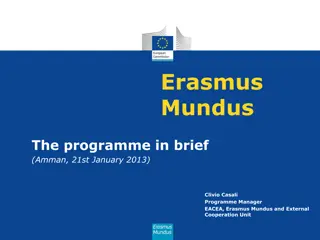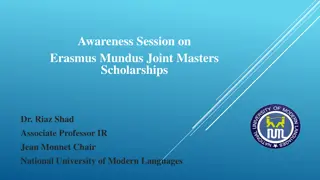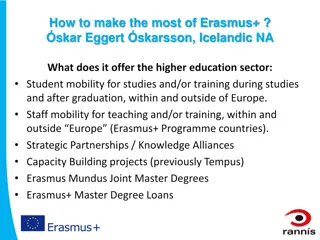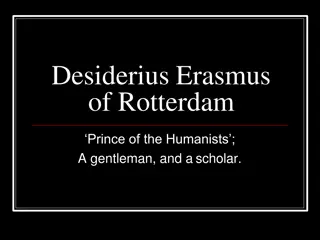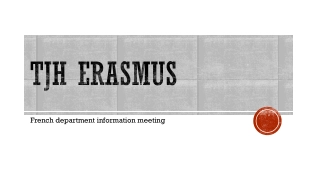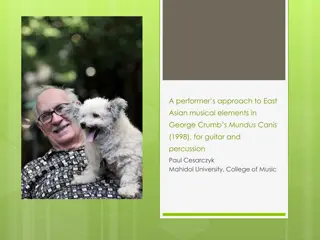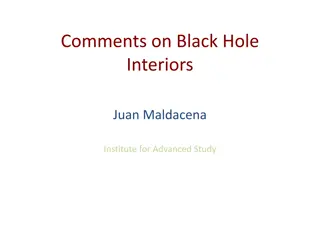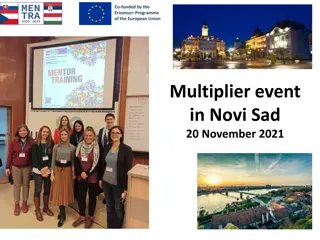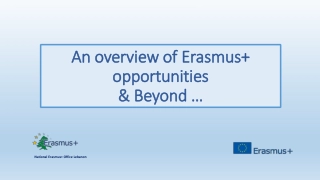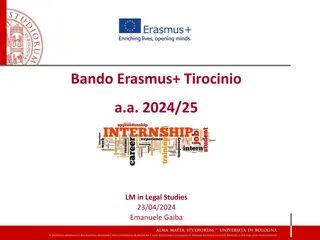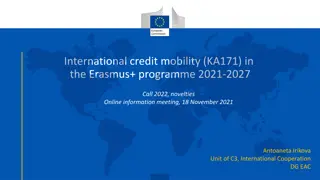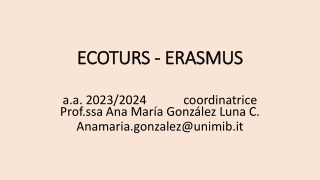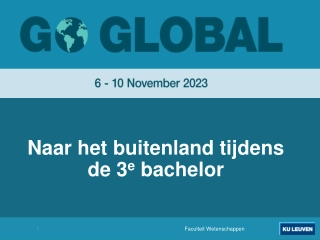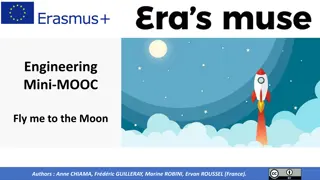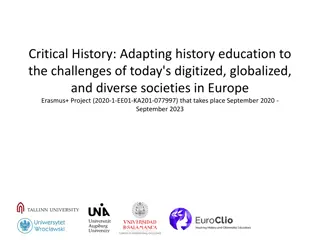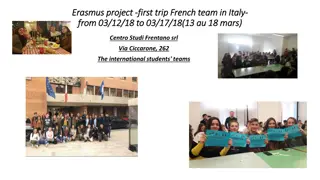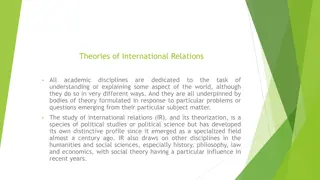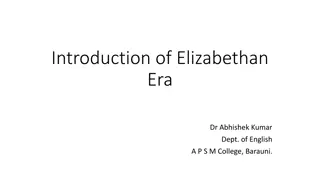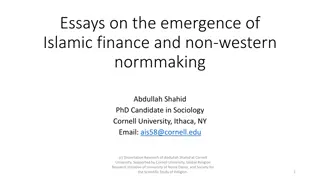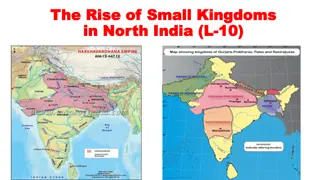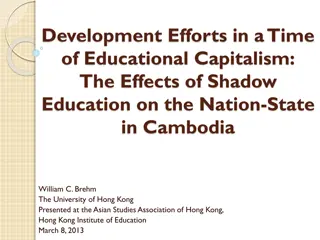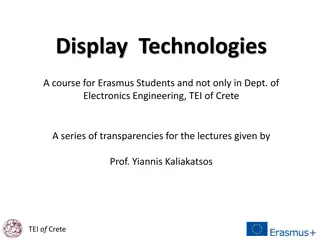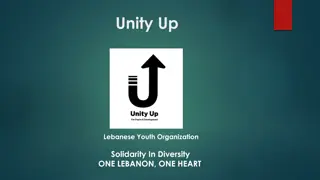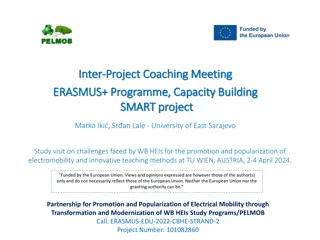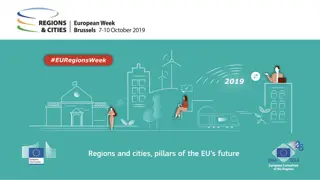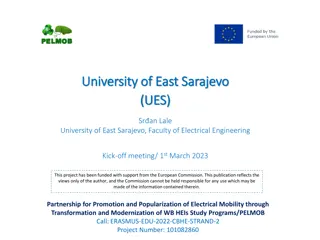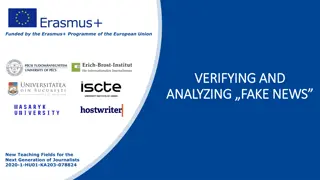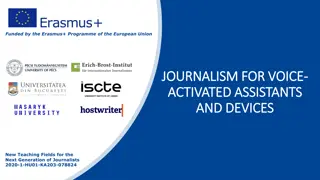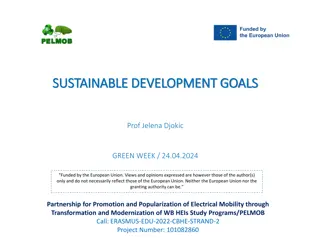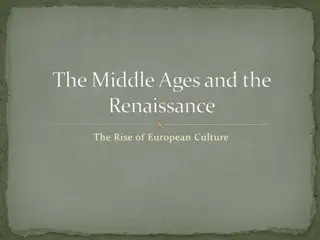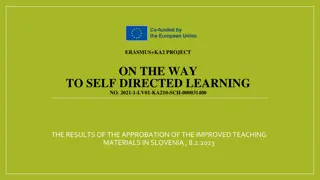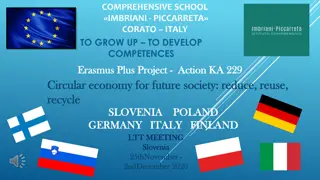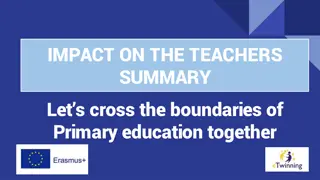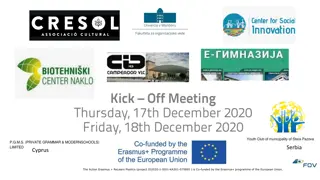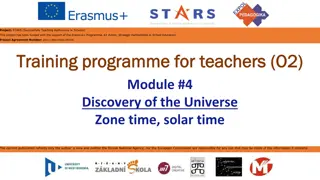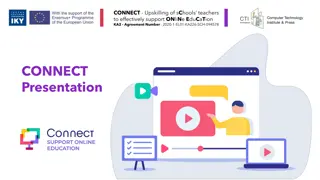Emergence and Significance of Erasmus Mundus: An Overview
Explore the emergence of Erasmus Mundus, a flagship academic cooperation program in Europe, aimed at enhancing the quality of higher education, promoting mobility, and fostering intercultural understanding. Learn about its aims, structure, and impact on European higher education within a global context.
Download Presentation

Please find below an Image/Link to download the presentation.
The content on the website is provided AS IS for your information and personal use only. It may not be sold, licensed, or shared on other websites without obtaining consent from the author. Download presentation by click this link. If you encounter any issues during the download, it is possible that the publisher has removed the file from their server.
E N D
Presentation Transcript
From Not quite falling out of the sky to Europe s flagship programme for worldwide academic cooperation: the emergence and significance of Erasmus Mundus Roger Dale University of Bristol Presentation to 2012 LLAKES Conference, 19 October
Erasmus Mundus in LLAKES Higher Education Non-UK (though UK universities involved) European policy (but not Bologna-related) Sui generis Consequences for Learning and Life Chances Theoretical and methodological challenge
What is it? Erasmus Mundus 2004-8 Erasmus Mundus is a co-operation and mobility programme in the field of higher education intended to promote the European Union as a centre of excellence in learning around the world. It aims to support the development of top-quality European Masters Courses and to enhance the visibility and attractiveness of European higher education in third countries; the improvement the quality of higher education in Europe, and the promotion of intercultural understanding through co-operation with third countries. The specific aims of the programme are to: promote quality and excellence in European higher education; encourage the incoming mobility of third-country graduate students and scholars; foster structured co-operation with third-country higher education institutions; and improve the profile, visibility and accessibility of European higher education in the world. Action 1 - Erasmus Mundus Masters Courses, comprising integrated courses at masters level offered by at least three universities in three different European countries;
Outline of Argument Section 1 sets out the relatively wider and relatively narrower contexts from which Erasmus Mundus emerged, and provides a more detailed account of the processes through which the form and detail of the programme were assembled, with a particular emphasis on the logic of intervention it adopted. Based on process tracing method, via document analysis and interviews with key actors Section 2 presents briefly details of the content and implementation of the programme, noting how they both shift and extend the parameters of European higher education. Section 3 attempts a brief account of what EM means , theoretically and politically; a sui generis example of EC agenda amplification
Contexts of Emergence of EM; what made it desirable? the context of context generated two overlapping but distinct responses at the European level that are directly relevant to this paper. At the level of the Commission, they led to the programme for global competitiveness that was summarized in the Lisbon agenda and note significance (via Prodi s involvement) of 9/11/2001 In the HE sector, it raised concerns about the implications of the commercialization of HE, European HE s global attractiveness and its competitiveness in terms of ability to contribute to economic growth. Associated with this, Europe s growing involvement in inter-regional activities also took in the higher education sector (which was to be crucial to the development of EM)
Contexts of Emergence of EM; What made it possible? 1 Immediate context of Sorbonne, Lisbon, Bologna Sorbonne--facilitate academic mobility within and to Europe to enhance its global attractiveness and especially in competition with the USA; toincrease Europe s share of trade in HE; to respond to the increasing need for mobility, especially in view of the proliferation and incompatibility of European HE qualifications; deepen the European dimension. Lisbon; direct relationship between Lisbon Agenda and Education Bologna EM never mentioned, but close adherence to action lines, to point where EM represented the fullest implementation of the Bologna mechanisms (informant interview).
Contexts of Emergence of EM; What made it possible? 2 The ERASMUS context Provided a known brand Provided a role for the EC, via a level of cooperation that only it could enable and coordinate. Set a precedent for the mechanism of incentive funding to stimulate student exchanges, (through which, in the case of Erasmus) the Community [was enabled to] encourage individual academics to set up networks. (Corbett, 2004, 11: emphasis added) Insisted on academic recognition for the diplomas involved and for periods of study spent abroad
Contexts of Emergence of EM; What made it possible? 3 The opportunity structure available within DGEAC The precise form it took is more appropriately seen as a supply led political intervention, that emerged from this particular conjuncture of events and discourses around the turn of the millennium; it might be seen as a form of policy entrepreneurship on the part of the European Commission, but with a very strategic set of objectives. Logic of Intervention; Clear, if broad, problematisation; effectively non-existent conception of solution ; but most driven by, and characterised by its mechanisms Strong support from DGEAC (Commissioner), ACA, EUA (cf. in house epistemic community) So, while it didn t quite fall from the sky , it was rather like that (Senior DGEAC official).
Contexts of Emergence of EM; What made it possible? 4 Development Funding Very significantly, the programme was launched jointly by the Commissioner for Education, Viviane Reding, and the Commissioner for External Relations, Chris Patten (as well as by European Commissioner Prodi). Patten s support took more concrete form in the shape of money earmarked by DG RELEX for projects in India and China This then became the basis of the regional funding windows that greatly supplemented DGEAC funding of EM; becomes element of EU region to region diplomacy
Examples of key mechanisms Basic Structure; Scholarships to 3rd country students to follow 2 yr joint Masters degrees involving study in a consortium of three EU Universities, who created and administered the courses Courses selected by DGEAC, administered by EACEA Funding goes directly to students; 15K Euros to consortium for administration Significant EU level intervention via imposition of joint degrees, and emergence of fees as default assumption Contractual agreement is between Commission and Consortium (of 3 Universities from different countries); minimal (formal) national government involvement
Conclusions 1 It addresses the objective of enhancing the attractiveness of Europe s HE offer in very particular ways, demonstrating, or performing, those qualities rather than aspiring to them as policy goals. It also sees them in a more pan-European way, rather than as the outcome of collected national or institutional qualities. Its benefits are achieved at European (and institutional) levels. On the whole, they do not accrue mostly to MS, except perhaps in the case of brain drain (fears of which may have been exagerrated), though there is little direct reference to economic benefits to Europe. Instead, various forms of the attractiveness of Europe are promoted, particularly in respect of the potential for cultural diplomacy
Conclusions 2 The network form through which EM works, may go better with the grain of academic life as conceived outside the major reorganisation and reorientation schemes envisaged by Bologna and Lisbon respectively Its forms and processes do not follow closely the methods employed in other EU educational programmes, such as the OMC model, for instance, or indeed the Bologna Process, except in so far as some Bologna mechanisms are employed to enable realisation of the joint Masters mode EM does not so much occupy a grey zone between national legal frameworks and European level integration ambitions , Gornitzka (2008, 32), as display a form of creeping competence (Pollack). It borrows/assumes/derives its assumption of competence, in part from the original Erasmus programme, and applies that competence in a governance space it is able to construct, and occupy, itself


